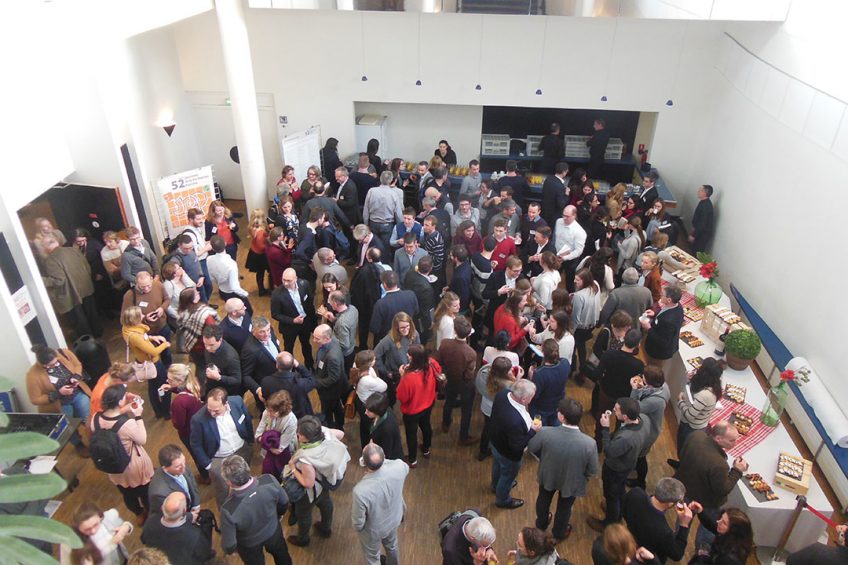Focus on pig feed efficiency at JRP in France

Feed is always the star of the French Swine Research Days (JRP). At the 52nd edition of the JRP, held in Paris, France, on 4-5 February 2020, the topic got already addressed during the opening of the event, followed by several presentations the genetic session.
“There are promising new measures to improve the selection of feed efficiency in pigs,” said Hélène Gilbert of the French National Research Institute for Agriculture, Food and Environment (INRAE – a new name since January 2020). She presented a summary of results obtained in the Feed-a-Gene project for new measures to obtain feed efficiency in pigs.
Some of the most promising measures (related to feeding activity, pig interactions, digestibility and indirect genetic effects) had moderate to high heritability (from 0.18-0.70). Gilbert said, “These most promising measures must be validated in the short term to identify the best procedures to implement on-farm.”
Technological treatments of raw feed materials
The Swine Research Days are co-organised by the French Pork and Pig Institute (IFIP) and the French National Research Institute for Agriculture, Food and the Environment (INRAE). The 52nd edition was attended by nearly 400 participants, including 20% from abroad.
Several presentations followed about the impact of different technological treatments on the nutritional value of several raw materials. Eric Royer, attached to IFIP, gave a presentation on the influence of dehulling and thermal treatment of soybeans on nutritive value of partly defatted soy meals for piglets. He said, “Thanks to their excellent biological value, meals produced from local and non-GMO soybeans could be of nutritional and economic interest in Europe.”
His colleague Didier Gaudré, also on behalf of IFIP, said, “The pelleting of feed contributes to improving the performance of pigs for fattening. Our data indicate a 5% improvement in the feed conversion ratio and the growth rate in castrated males with a pelleted feed at low temperature and composed of metropolitan raw materials.”

Benefits of yeast for pig nutrition
Other presentations focused on the interest of yeast or yeast-extracts for pigs. Fernando Bravo de Laguna, pork R&D project manager for Lallemand Animal Nutrition said, “It is proven that live yeast acts on intestinal functions on several levels: stabilisation of the intestinal microbiota, improvement of intestinal integrity, and modulation of natural defences.”
Géraldine Kuhn of Phileo by Lesaffre added, “Thanks to the combination of its functional active ingredients, associated with good palatability, amino acid profile and high digestibility of proteins and amino acids, yeast extract L (a bakers’ yeast extract enriched in protein) seems to constitute an innovative raw material to be used in the feeding of piglets after weaning.”
African Swine Fever overview
Nicolas Roze of the French Agency for Food, Environmental and Occupational Health and Safety (ANSES) gave a review on the African Swine Fever (ASF) epizootic. He explained that the ASF outbreak currently affecting Europe and Asia began in Georgia in 2007, probably due to inappropriate disposal of kitchen waste from a ship from East Africa. The highly virulent strain involved, belonging to genotype II, is extremely resistant in meat and the environment.
In China, the virus was introduced on August 3, 2018, probably from Russia, gave rise to a major epidemic, mainly in the domestic reservoir, that is now completely out of control and has spread to Mongolia, Vietnam, Cambodia, Laos, Myanmar, North Korea, South Korea and the Philippines. Human activities play a central role as a propagation factor, thus promoting progression by jumps, sometimes over long distances.
Check the progress of the ASF virus in Asia on this interactive Pig Progress map











